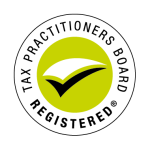Running Out of Cash? Here’s How Forecasting Can Save You
Running Out of Cash? Here’s How Forecasting Can Save You
Cash flow problems are one of the biggest challenges facing Australian small businesses today. Whether you’re a tradie, a startup founder, or running a family business, the stress of not knowing whether you can pay your bills next month can be overwhelming. But here’s the good news. With smart cash flow forecasting, you can take back control of your finances before things spiral out of hand.
Why Do So Many Businesses Run Out of Cash?
It’s not always about lack of profits. Many profitable businesses still go under due to poor cash flow management. You might have plenty of sales on the books, but if customers are slow to pay or your expenses hit all at once, your business can find itself in the red quickly.
Common cash flow killers:
- Late-paying clients
- Unplanned expenses
- Seasonal dips in revenue
- Overestimating future income
- Poor inventory management
What Is Cash Flow Forecasting?
Cash flow forecasting is the process of predicting your business’s future cash position based on your income and expenses. It gives you a clear view of what’s coming in, what’s going out, and what your bank balance will look like weeks or months ahead.
With the right forecast in place, you can:
- Plan for tax obligations and upcoming bills
- Anticipate cash shortages before they happen
- Make smarter investment and hiring decisions
- Negotiate better terms with suppliers or lenders
- Sleep easier at night knowing you’ve got a financial roadmap
Real Benefits for Business Owners
For many of our clients across Australia, forecasting has been a game changer. It’s not just about surviving, it’s about thriving. Whether you’re in hospitality, construction, retail or any other industry, having a tailored cash flow forecast can empower you to make confident, informed decisions.
How to Get Started with Forecasting
While there are plenty of DIY tools available, nothing beats the insight of working with a trusted accounting partner. A good accountant can build a custom forecast based on your specific business model, industry trends, and local conditions. Better yet, we can help you review it regularly and adjust course as needed.
Here’s what we typically include:
- 3, 6, and 12-month projections
- Scenario planning (best, worst, and expected cases)
- Rolling updates to adapt to real-time performance
- Guidance on budgeting, cost control, and payment cycles
Don’t Wait Until You’re Out of Options
If you’re feeling the pinch, now’s the time to act. A cash flow forecast isn’t just a financial tool, it’s a survival strategy. The sooner you get visibility over your future cash position, the more options you’ll have.
Reach out to our team at SKD Accountants today to book a free consultation. We’ll help you gain clarity, regain control, and make confident decisions to grow your business not just keep it alive.
Ready to take control of your cash flow?
Book a free 30-minute discovery call with our team. Let’s forecast your future — and make it bright.


